Chinese Books
Five tips for a page-turning collecting category
Chinese Books – Five tips for a page-turning collecting category
 Engraving from lot 300, An embassy from the East-India Company of the United Provinces, published 1669.
Engraving from lot 300, An embassy from the East-India Company of the United Provinces, published 1669.
As the Chinese art market continues to mature there is increasing appetite for new collecting categories with mainstream collectors. One of these, which is a particularly hot tip for aspiring (and established) collectors, is the category of Chinese books.
Here are five tips to help build a fabulous Chinese art library with supporting examples from our upcoming Asian Art sale on 11 November 2019.
1. Chinese imperial works are the Holy Grail
The legendary encyclopaedia, Compendium of Birds was an imperially commissioned by Emperor Kangxi from court artist Jiang Tingxi (1669 – 1732) to comprise a catalogue of 360 species of birds. It was perhaps the most important publication of the Qing Dynasty.
Compendium of Birds was produced in an edition of one, with a later version being commissioned by Kangxi’s grandson, the legendary Qianlong Emperor from two lesser known court artists. We are delighted to offer six leaves from the original album, each depicting a different species of chicken. Each leaf has been separated and framed. Another album by Jiang Tingxi (1669 – 1732) was sold for 173 million RMB ($25 million USD) in 2016 to legendary collector Liu Yiqian and has since been exhibited at the Long Museum in Shanghai.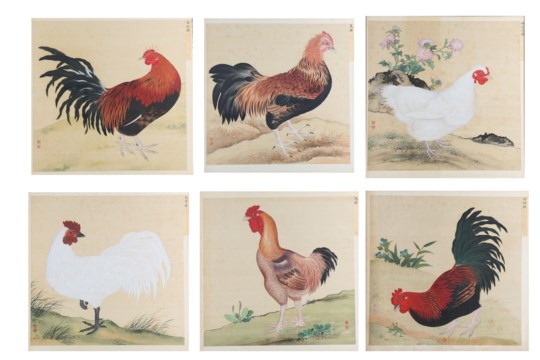 Lot 20. Jiang Tingxi (1669 – 1732), Cockerels, from the album Compendium of Birds. Estimate: £20,000 – 30,000
Lot 20. Jiang Tingxi (1669 – 1732), Cockerels, from the album Compendium of Birds. Estimate: £20,000 – 30,000
Printed texts were also produced for the palace. An example text, Teaching of Kangxi provides a unique insight into the personality of the Kangxi Emperor and offers a rare view on imperial court life, with topics ranging from natural history, material culture, science and morality. We are delighted to offer a Manchurian language, Yongzheng period edition of the work published in two volumes in the year 1730.
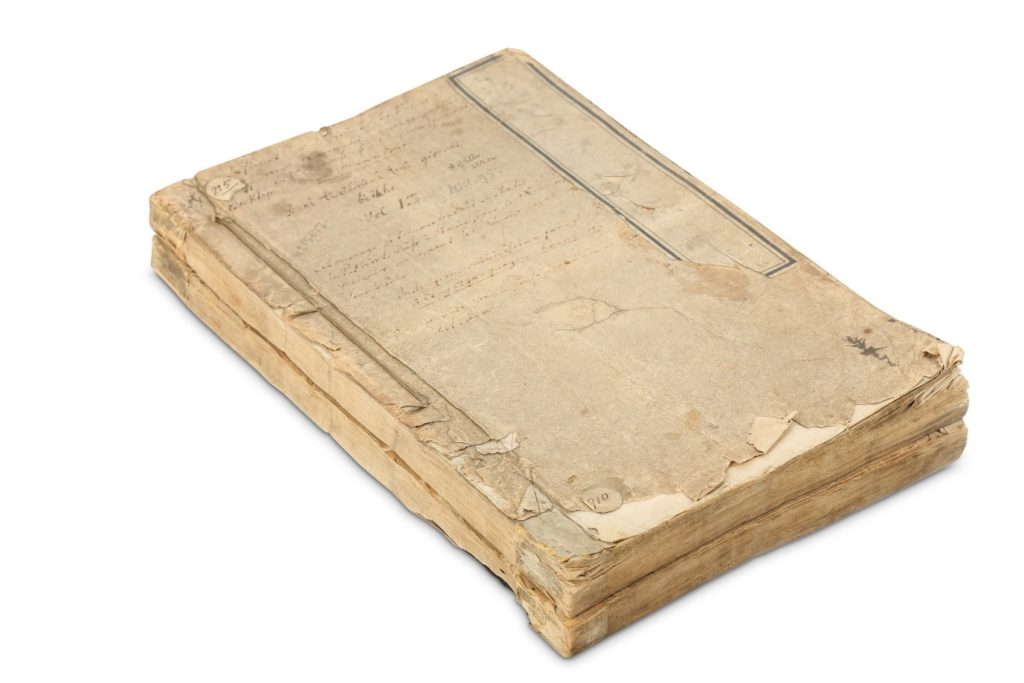 Lot 287. [Shengzu Gosin Hvwangdi-i] Boo-i Tacihiyan Ten-i Gisun [Bithe] [aphorisms from the familiar instructions of Shengzu, the Emperor Ren], Qing Dynasty, Yongzheng period, 1730. Estimate: £5,000 – 8,000.
Lot 287. [Shengzu Gosin Hvwangdi-i] Boo-i Tacihiyan Ten-i Gisun [Bithe] [aphorisms from the familiar instructions of Shengzu, the Emperor Ren], Qing Dynasty, Yongzheng period, 1730. Estimate: £5,000 – 8,000.
The work was produced exclusively for use within the imperial household. The presence of burn marks on the back of the book suggest it was burnt during the sacking of the legendary Yuan Ming Yuan in 1860 by English and French soldiers.
Apart from the present lot, there are only two other known copies, one in Beijing (Union Catalogue of Manchu Books in the National Library of Peking, 1933) and in Paris (Jeanne-Marie Puyraimond, Walter Simon and Marie-Rose Séguy, eds.,Catalogue du Fonds Mandchou, BnF, 1979). The latter copy was sent by Poirot from Beijing to Paris in 1778 and was acquired by the Bibliothèque Nationale in 1810 (p 28).
The covers of each volume have numerous annotations, indicating that it was treasured and well-studied upon its arrival in the West. A pencil annotation ‘Möll. 95.’ to the cover, along with a loosely inserted piece of paper stating ‘Möllendorff no 95 Domestic Teachings of Kangxi’ is a reference to the article ‘Essay on Manchu Literature.' ‘Journal of the North China Branch of the Royal Asiatic Society 24, no. 113 (1889–90): 1-45’, references the present piece on page 22. There is also an annotation reading ‘cat. Klap’, which probably references scholar Julius Klaproth(1783-1835). ‘A.G. Ellis 25.8.04’ and ‘Luzac’ which appears in the same hand writing, may indicate that Ellis purchased the book from LUZAC, who also handled the sale of his library after his death. The numbers ‘225’, ‘15677’ and ‘910’ may refer to other unknown bibliographical lists. Another note references Louis Poirot’s (???, 1735 – 1814) monumental Mémoires concernant les Chinois, in volume 9. Poirot in fact translated the present work into Italian and French with a bilingual version published in 1783.
The rarity and healthy estimates on these items reflect the importance of these key pieces in the current market for Chinese book collecting.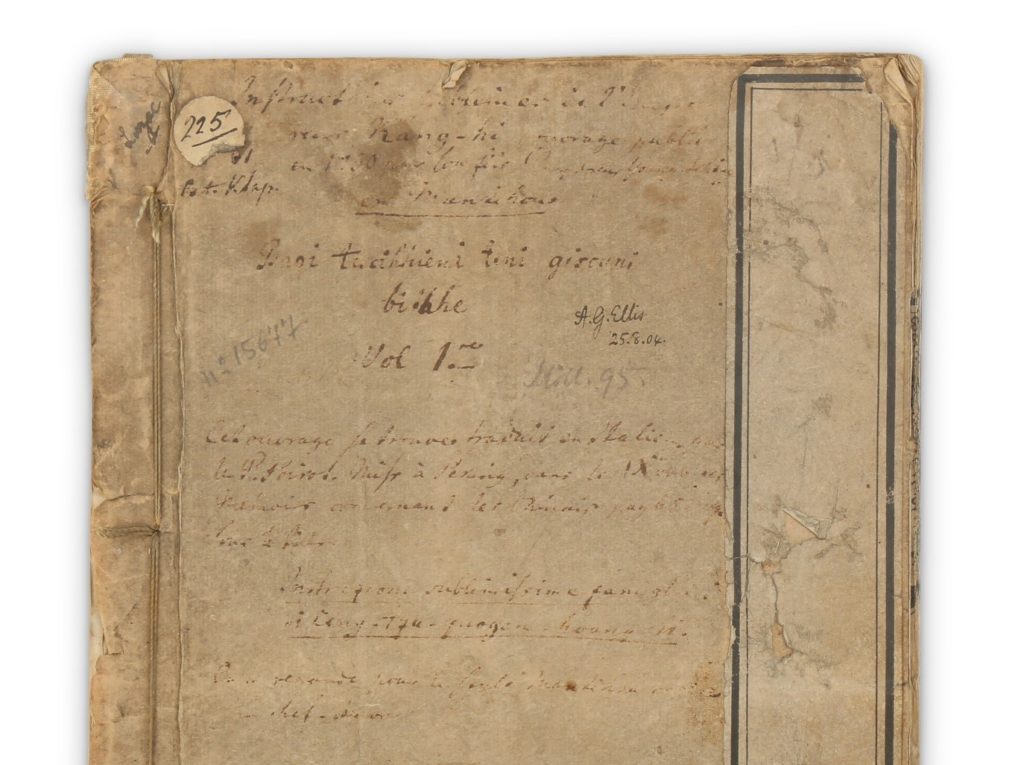
2. Serious collectors need a serious library
It is often said, a serious collector of Chinese art will dedicate 10% of their funds to their library budget, and with numerous collectors spending tens of thousands or more in every sale, this can add up, quickly.
Art reference books, particularly those documenting important collections give a gold standard for authentic pieces. Lavishly produced, the 11-volume Eumorfopoulos collection illustrates work from one of the most important early 20th century collections, now partly split between the British Museum and the V&A.
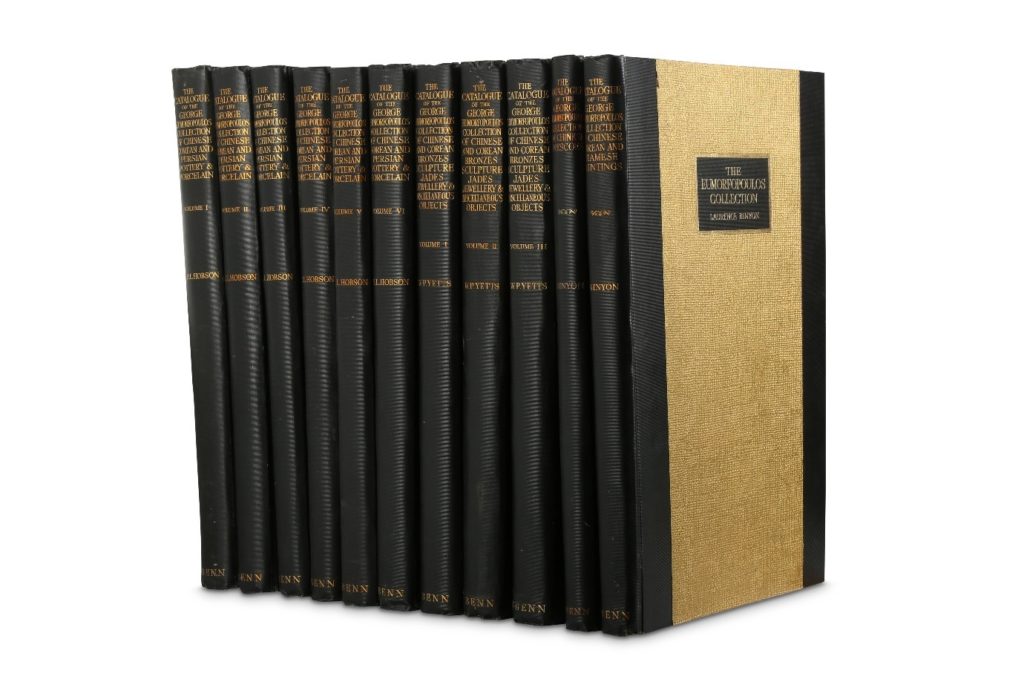 Lot 288. The George Eumorfopoulos Collection, 1925-28, Estimate: £5,000 – 8,000
Lot 288. The George Eumorfopoulos Collection, 1925-28, Estimate: £5,000 – 8,000
Books can also give an indication of provenance and in some cases can provide evidence of the history of an artwork, previously lost. An example of this is lot 33 featured in our Fine Chinese Paintings sale. After careful research, it was established that the work had been sold at Sotheby’s London in 1981, where it had been offered as a genuine work by the artist Qi Baishi. The difference between a genuine work by Qi Baishi and a copy is the difference between a few hundred pounds and tens of thousands of pounds, so the text-based research certainly does add value. Proving access to the right books can enhance other areas of collecting.
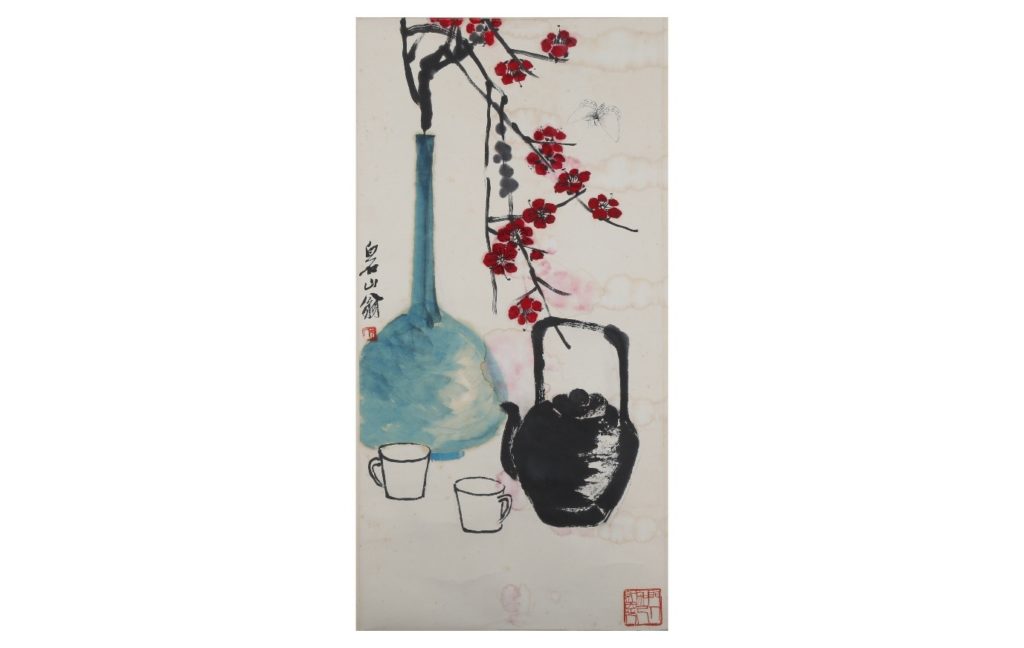 Lot 33. Qi Baishi (attributed to, 1864 – 1957), Bottle and Plum Blossom. Estimate: £500 – 800
Lot 33. Qi Baishi (attributed to, 1864 – 1957), Bottle and Plum Blossom. Estimate: £500 – 800


3. Books shape the direction of collecting practice
Because catalogues of important collections have been used by generations of collectors, they have been key to how markets have shifted over the decades. They also provide research for objects and shape the ways artworks are described, valued and more widely understood.
One of the most important books about the subject of bronze vessels in the history of Chinese art, the Xuanhe bogu tulu was compiled originally by Wang Fu in the Xuanhe period (1119-1126), to record 839 bronze objects from the Xuanhe Palace Collection. The work recorded 27 types of bronze objects, detailing textual research, capacity and weight. New definitions of bronze detailed in the volume continue to define the way that bronzes are described today.
The work was reproduced in the Yuan Dynasty and in the Ming Dynasty. The present edition is the finest edition produced during the Wanli period (1573-1620) and is also considered to be the most important work of the Anhui woodblock carver Huang Deshi. The work was illustrated by Ding Nanyu and Wu Zuogan and written by Liu Jiran.
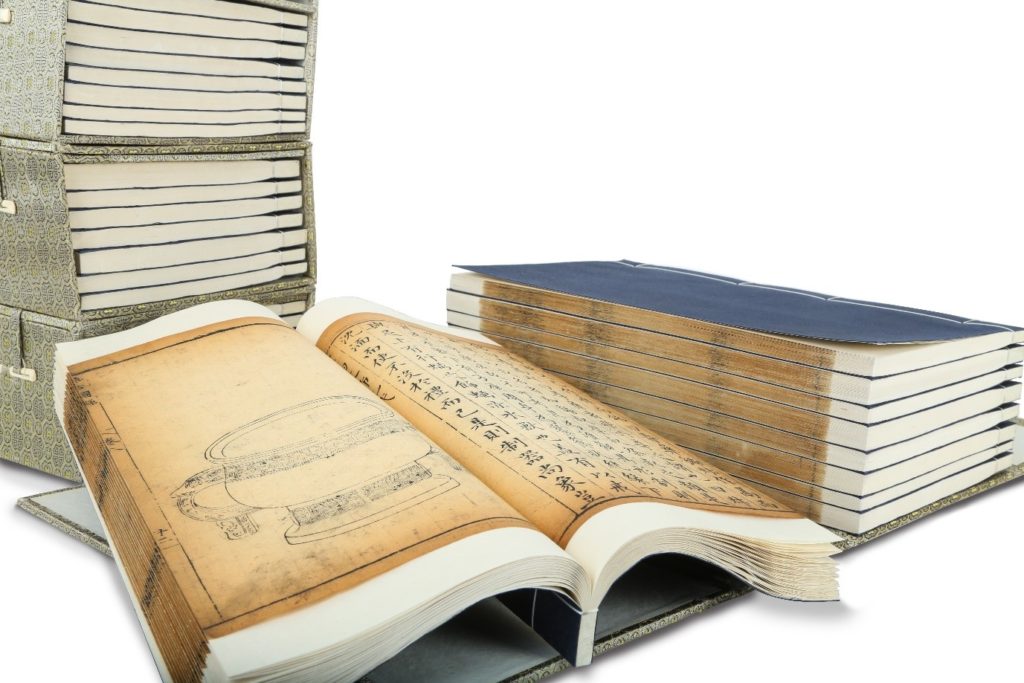 lot 289. Xuanhe Bogu Tulu, illustrated record of ancient objects compiled in Xuanhe Period, Ming Dynasty, Wanli 16 (1588). Estimate: £10,000 – 15,000
lot 289. Xuanhe Bogu Tulu, illustrated record of ancient objects compiled in Xuanhe Period, Ming Dynasty, Wanli 16 (1588). Estimate: £10,000 – 15,000
4. Artworks in their own right
This point should be evident from the examples illustrated above. The beauty, craft and artistry of Chinese books comes from the various aesthetic choices that have contributed to the overall presentation. One category of book where the aesthetic value is particularly evident in the woodblock printed books of Rong Baozhai, created around the middle of the 20th century. The Beijing-based publishing house is widely considered to have made major technological artistic developments in the field of Chinese woodblock prints. Five Rong Bao Zhai publications will be included in the auction of Fine Chinese Paintings on 11 November 2019. Lot 47, Ten Bamboo Studio Catalogue of Letter Paper, was hailed by Jan Tschichold in 1970 as “an incomparably perfect facsimile; the best book of modern times anywhere”. The work is also included the British Library's permanent highlights exhibition and can also be found in Beautiful Bookbindings: A Thousand Years of the Bookbinder's Art, 2011.
The beauty of these books as artwork in their own right, make them a interesting focus for a new collection.
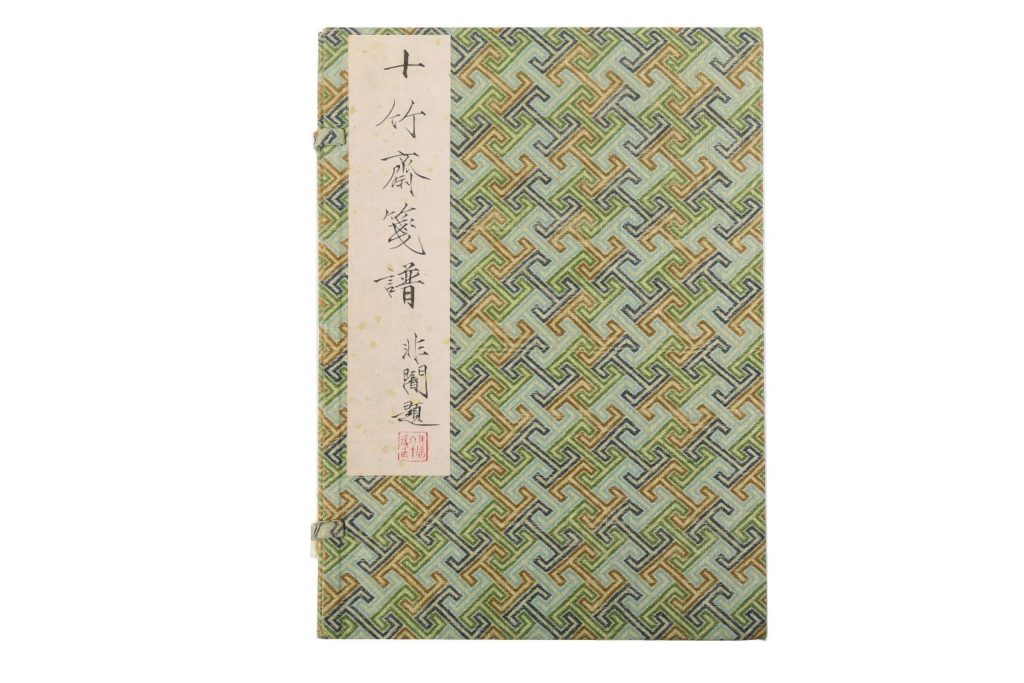
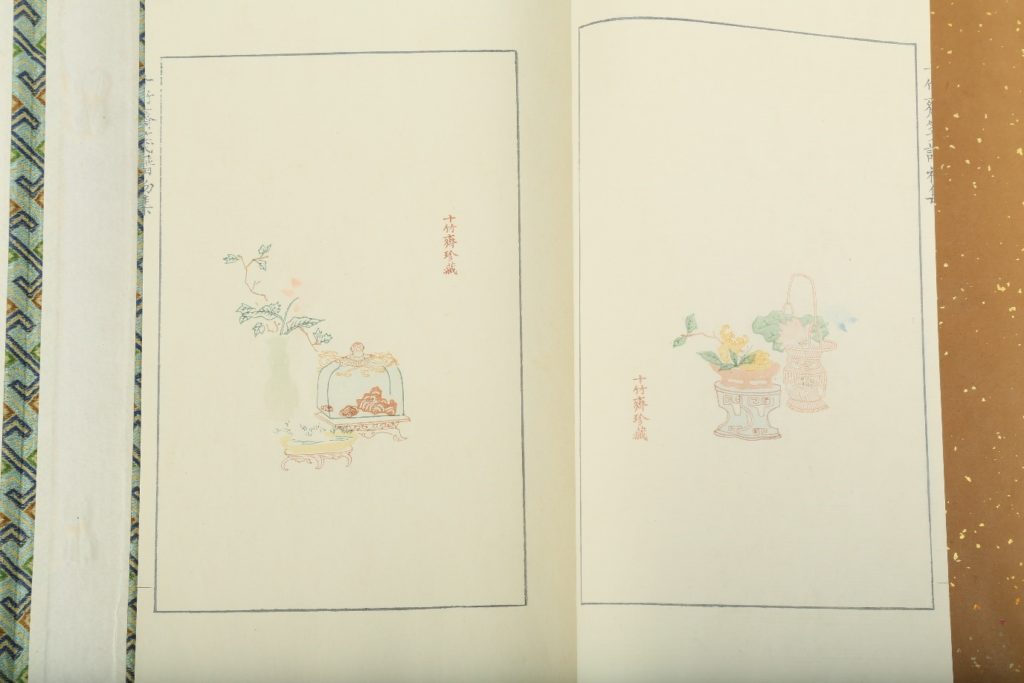 lot 47. Shizhuzhai Jianpu, ten bamboo studio catalogue of letter paper, Beijing: Rong Bao Zhai, 1952 edition. Estimate: £1,500 – 2,000
lot 47. Shizhuzhai Jianpu, ten bamboo studio catalogue of letter paper, Beijing: Rong Bao Zhai, 1952 edition. Estimate: £1,500 – 2,000
5. Books make History
Books are the purveyors of the written word and therefore literally make history. One book which provides a key example of history in the making is An embassy from the East-India Company of the United Provinces, published in English for the first time in 1669. This volume marked the first ever major attempt to accurately describe China to a Western audience, following the fall of the Ming Dynasty and the opening of foreign trade to China. The book contains an account of the embassy of the Dutch East India Company to the Shunzhi Emperor (1638-1661) and an account of general Chinese customs and occupations. It is notable for its description of tea and for sparking centuries of interest in Chinese art and culture.

 lot 300. lot 300. This important volume marked the first ever major attempt to accurately describe China to a Western audience, following its gradual opening up to foreign trade after the fall of the Ming Dynasty. The book contains an account of the embassy of the Dutch East India Company to the Shunzhi Emperor (1638-1661) and an account of general Chinese customs and occupations. It is notable for its description of tea and also for sparking centuries of interest in Chinese art and culture. Qing Dynasty, Kangxi period, 1669. Estimate: £4,000 – 6,000.
lot 300. lot 300. This important volume marked the first ever major attempt to accurately describe China to a Western audience, following its gradual opening up to foreign trade after the fall of the Ming Dynasty. The book contains an account of the embassy of the Dutch East India Company to the Shunzhi Emperor (1638-1661) and an account of general Chinese customs and occupations. It is notable for its description of tea and also for sparking centuries of interest in Chinese art and culture. Qing Dynasty, Kangxi period, 1669. Estimate: £4,000 – 6,000.


Its informative and often fantastical illustrations provided an important snapshot of relations between China and the West at the time, from a Western perspective.
The mentioned works will be offered for sale by Chiswick Auctions on 11 November 2019 in the following two sales: Fine Chinese Paintings and Asian Art.
For more information contact Head of Asian Art, Lazarus Halstead.
Fine Chinese Paintings
Monday 11th November, 9am
Asian Art
Monday 11th November 12.30pm
Viewing Dates:
Chiswick Saleroom, 1 Colville Road, W3 8BL
1st – 10th November
Monday – Friday, 10am-6pm
Saturday – Sunday, 11am-5pm